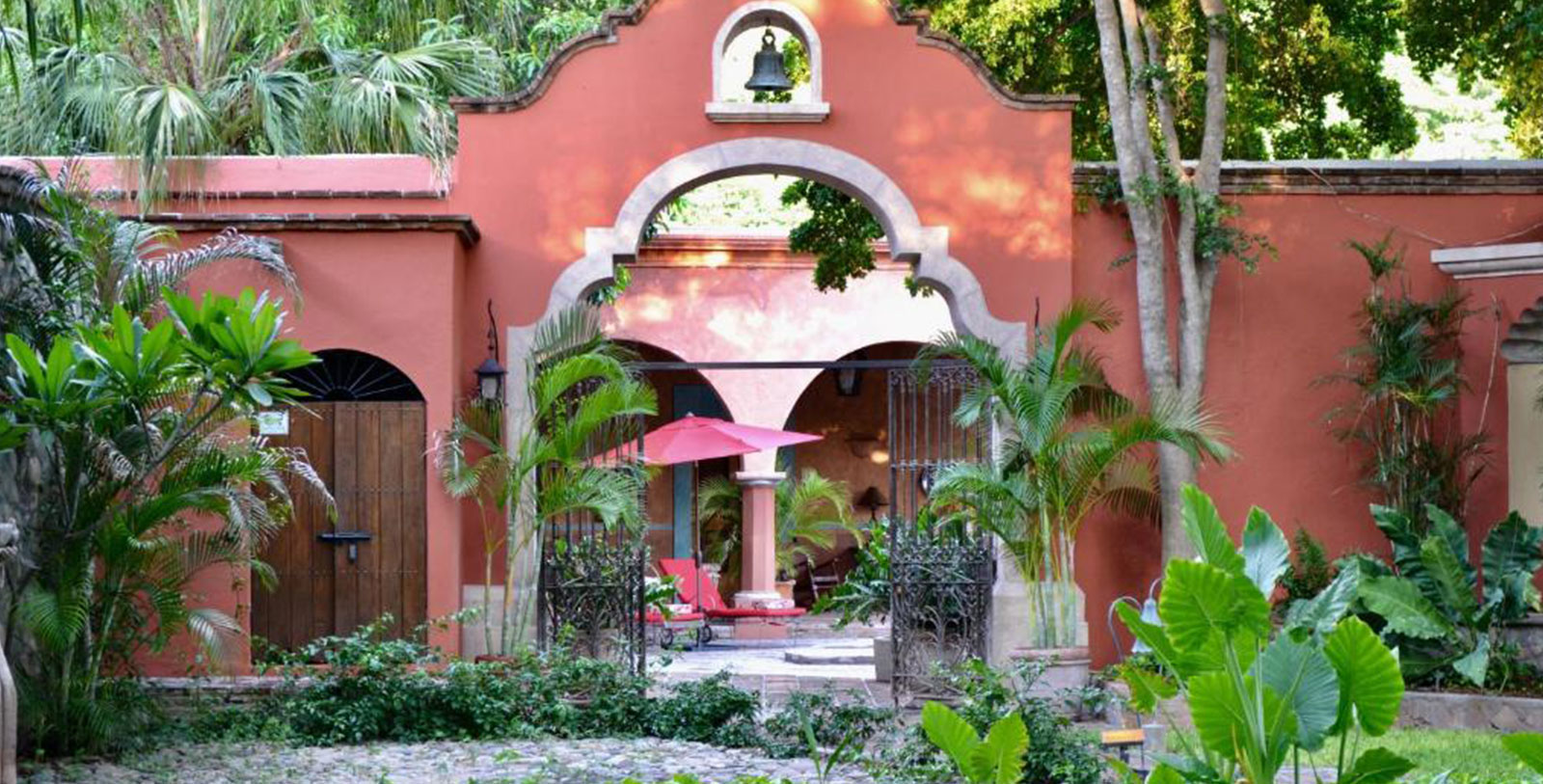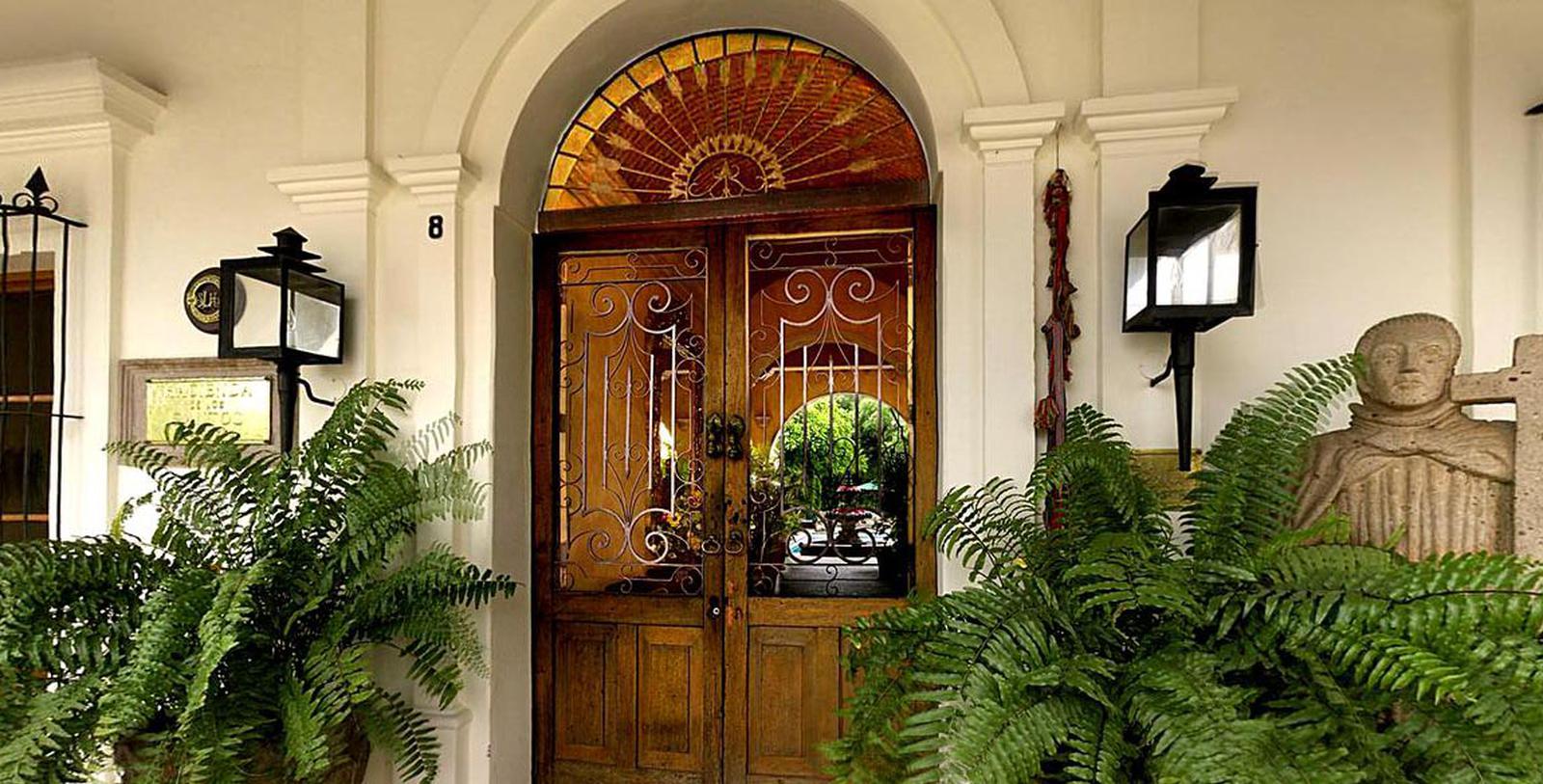Receive for Free - Discover & Explore eNewsletter monthly with advance notice of special offers, packages, and insider savings from 10% - 30% off Best Available Rates at selected hotels.
history
Discover Hacienda de los Santos, which was once a self-sufficient colonial estate dating back to the 17th century.
Hacienda de los Santos, a Member of Historic Hotels Worldwide since 2015, dates back to 1685.
VIEW TIMELINEThe present-day village of Álamos was first visited by Francisco Vásquez de Coronado in 1540 while looking for the "Seven Cities of Gold." Even though he never found the fabled cities, it turned out he was within just a few miles of one of the largest silver deposits in North American when he camped in the area that year. Spanish settlers finally began mining the silver more than a century later, specifically toward the beginning of the 1680s. Many Spanish colonists arrived to open their own mines at the time, which were some of the most productive in all colonial Mexico. With the newfound wealth came dozens of beautiful mansions, some in excess of 80,000 square feet in size. The primary building at Hacienda de los Santos was one such building to appear then, debuting at the height of the town’s initial period of growth in 1710. (The mansion itself was in excess of 20,000 square feet.) When its original owners—the Alcantar family—began construction, they chose to develop it next to a working sugar mill that had been in operation for several decades prior. Nevertheless, the mansion was gradually joined by five additional interconnecting structures, some of which are still adjoined today by a series of hidden passageways and a unique stone bridge.
The Alcantars subsequently lived inside their beautiful estate for the next three centuries, until they decided to sell the historic complex in the late 1900s. Thankfully, the mansion found a new lease on life when the current owners, Jim and Nancy Swickard, bought it for themselves. Jim and Nancy were avid travelers who frequently visited Mexico over the span of 40 years. Upon visiting Álamos during one of their trips in 1989, they fell in love with the historic estate. The Swickards then restored the grand structure into a wonderful boutique hotel called the “Hacienda de los Santos.” Alongside the Alcantar family, the current owners have transformed Hacienda de los Santos as a unique space for travelers to relax within during their trip to Álamos. The Swickards have specifically enriched the resort with careful details that exude all the comforts of home. In 2021, a second arched stone bridge will even be added to the resort, which will connect a colonial-era, Baroque-inspired chapel onto the grounds. In the village itself, Hacienda de los Santos still presides over some fifty acres of land, a ranch themed party area, and a 12-aircraft capacity hangar adjoining the local airport. A member of Historic Hotels Worldwide since 2015, this outstanding historic hotel continues to be among the best available in all of Sonora.
-
About the Location +
Located in the Mexican state of Sonora, Álamos today is among the county’s most popular tourist destinations. In fact, Mexico’s official Secretariat of Tourism deemed the community to be one of its premier “Pueblo Magicos.” (The designation connotes that the national government considers the town to have a rich cultural, historical, and/or natural character worth experiencing.) Indeed, Álamos itself features an immense history, one that harkens back to Mexico’s colonial period. The very first European settlers to arrive in the region were a group of Spanish conquistadors led by Francisco Vásquez de Coronado in 1540, who was in pursuit of the legendary “Seven Cities of Gold.” Stumbling upon the site via a Native American trading path, Coronado specifically setup camp within an arroyo that protected his party from the elements. He subsequently spent the next few days searching for any sign of the settlements but discovered nothing. Before his departure, Coronado decided to name the area as “Los Frailes,” or “The Friars.” He specifically created on the moniker after seeing a series of tall white rocks that looked reminiscent to several hooded priests. The area remained sparsely populated for some time thereafter, with only a Jesuit mission and some isolated farms emerging as the only permanent Spanish settlements. Indeed, the church and a sugar mill were among the few structures standing on the site of modern Álamos for almost a century.
Everything changed, however, when explorers discovered large silver deposits throughout northern Mexico during the early 1680s. Hundreds of enterprising Spanish colonists subsequently flooded into the region, allured by the chance for economic prosperity. Dozens of families began opening their own silver mines as such, placing them within sprawling estates known locally as “haciendas.” Eventually, enough people occupied the area that a few residents were even able to create a town to help support the emerging community. Under the direction of Domingo Terán de los Ríos—a Spanish soldier—the locals laid out the first street grids in a matter of months. When the construction reached its height in 1685, the locals decided to christen their town as “Real de los Frailes” after the silver mines that had opened nearby. (The name meant in English “Mining Camp of the Friars.”) Nevertheless, the settlement’s name gradually morphed into Álamos over the next several centuries. It also became one of the most important communities in northern Mexico, its wealth attracting all kinds of merchants and politicians. In fact, the influx of new, powerful individuals saw Álamos’ streets lined with some of the most beautiful mansions ever constructed in the area. Those illustrious residents even influenced the greater Mexican politics, who went as far as to finance certain exploratory expeditions like the one led by Juan Bautista de Anza II during the late 18th century.
The zenith of Álamos prestige occurred in the early 19th century, after Mexican officials elevated the community to serve as the capital for the state of Occidente. Unfortunately, the town fell into a prolonged economic decline in the wake of the Mexican Revolution. The area’s silver mines had been largely exhausted, prompting its many citizens to find livelihoods elsewhere. As such, the town had fallen into considerable decay by the start of the 20th century, with most of its gorgeous, historical mansions collapsing into ruins. Álamos thankfully found a new lease on life after the Second World War, when dozens of American and Canadian families began purchasing several of the manors downtown and thoroughly renovated them. More expats subsequently traveled to Álamos over the next few decades, who invested millions into saving its rustic character. Their arrival also heralded the town’s emergence as a prestigious tourist destination, fueled by scores of retirees and vacationing families from across the border. Álamos has since remained one of Mexico’s most popular vacation hotspots, its tranquil environment and beautiful scenery attracting countless visitors. Cultural heritage travelers have found the town to be particularly noteworthy due to its wonderful historical architecture and proximity to fascinating historical landmarks. Come experience the serenity of Álamos and the surrounding countryside today!
-
About the Architecture +
Hacienda de los Santos was once a sprawling colonial estate referred to as a “hacienda.” In colonial times, the hacienda was specifically a massive complex created by wealthy Spanish landholders known as “haciendados” or “patrons.” Those affluent settlers typically created their haciendas next to large colonial settlements, although most never actually lived inside. Many instead chose to reside within the cities, only visiting their estates on occasion. One major reason why the haciendados never stayed permanently on-site was that they used them primarily for economic purposes. Indeed, the hacienda emerged as either a plantation, factory, mine, or some combination of the three. The estate often had a number of related buildings that made the hacienda completely self-sufficient, too. Nevertheless, some hacienda owners—including the Alcantar family—did live on the grounds for generations. In these cases, a manor home functioned as the center of the hacienda. The residents subsequently designed it to reflect popular architectural aesthetics of the age, with the haciendados borrowing their architectural inspiration from Moorish, Renaissance, Byzantine, and Baroque forms. But the architecture was simplified due to the lack of available upscale building materials on the frontier. The hacienda owners also designed their homes to withstand the warm climates of Central and South America, which further influenced their general appearance. As such, the typical hacienda mansion typically featured a variety of common traits, such as white stucco walls and red clay tiles. Haciendados strictly used stucco for its ability to provide a natural source of heat control, while red clay could thrive in the dry air. Additional characteristics included the proliferation of timber frames, small windows with spindles, and numerous archways. The haciendados even installed a central courtyard as a way of providing a space to cook outdoors.


























